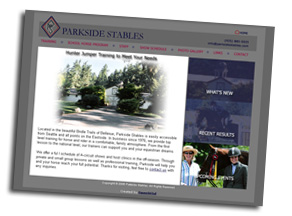By Kathy Keeley
There are two choices if you want to ride on a college team in a formal program: NCAA varsity equestrian and IHSA collegiate teams. Many parents think the two are synonymous when in fact they are very different – from scholarships and show formats to athletic benefits.
While there are hundreds of club teams, IHSA, there are very few varsity teams – about 20 or so teams at the varsity level. Varsity teams are only allowed 15 total scholarships according to NCAA rules. They work under a budget and do not have unlimited scholarships. This makes it very competitive for a freshman to get a full scholarship.
The NCAA route: Steps to get on a team
Getting on a team has become more and more competitive as interest grows. Due to this it can be challenging for English riders to get on a team, and the challenge is greater if you want to be the one showing on the team.
Tips:
• Go online and register with NCAA – National Collegiate Athletic Association. You cannot be recruited unless you have registered. You can find more information about this at:http://www.ncaastudent.org
• Make a video showing your riding skills on several different horses, including green ones. One segment can be on your show horse, but the others need to be at various levels of training. Wear britches, polo shirt, and tall boots for the video so you look professional. Demonstrate that you can do lead changes, jump different horses, and perform equitation on different mounts.
Note: With help from friends and the trainer, we videotaped my daughter riding seven horses from green broke to her fancy show horse.
• Write a resume of your riding experience starting with most recent. List your major wins including championships, blue ribbons, and riding experience. Include the resume with your videotape.
• Go on recruitment trips to 1-2 schools. Make an appointment with the coach, go on the admissions tour, and watch the team at a lesson or competition. Spend a couple of days getting a feel for the campus. Be prepared to answer the questions of why you want to be on their team and what you would contribute to the team.
• Follow-up and email the coaches. Keep them posted on any show success during your senior year. Some coaches receive over 200 videotapes, so communication is important. Most teams are put together in January and February, so have a plan B if you are not accepted on the team.
• Keep an open mind and look at several schools. Your chances of acceptance increase the more schools you are willing to consider.
3 important things to consider if you want to be on an NCAA team:
1. Early workouts: Girls are required under NCAA rules to work out in the weight room or training center three days a week, often at 6 a.m. You jog, lift weights, and use the exercise machines while working with a trainer assigned to your sport. Attendance is mandatory.
2. You work for your coach, not the reverse, as you may be used to if you show on the circuit. The coach is in charge. Team members do most of the work with the horses, from bathing, grooming, and braiding, to exercising the horses. There are no moms or grooms to assist.
3. Teams can be up to 50 -100 girls: Only four or five girls actually show in a competition from each team, which means that the majority of the team will be benchwarmers at the events.
My daughter’s story
My daughter chose to take the NCAA varsity team route. She liked that she was treated as a full college athlete with all of the privileges that male athletes receive, like tutors and advisors, study hall, community service, and early morning weight training. Other perks include early class registration, book pick up, and access to an athletic center with trainers.
Days are very busy, starting at 6:00 a.m. with weight training, classes, riding, team meetings, training room visits for massages, more classes, and then returning home to study at 5 pm. Her riding skills and confidence have grown significantly as she has learned to ride an unfamiliar horse with a three-minute warm-up and then ride an equitation course. I’ve watched her gradual transition from show rider to athlete and team member – a transition that required her to change her mindset, but it has paid off. She loves wearing her letter jacket and hanging out with the football and baseball teams—an athletic perk. She has found a place that’s not all females, another definite perk in her mind.
If you want to think ahead and prepare to get on a team, then here’s what we recommend:
Focus on equitation, get experience riding lots of different horses, and show in different places. Showing at the college level is all about equitation, so training in equitation as opposed to just the hunter or jumper rings is key. Years of riding experience helps, especially at a competitive level, which prepares you for handling the nerves, excitement and competition in different venues. Coaches may prefer riders who have some experience in other types of team sports and athletics because they understand team dynamics, athletics, and competition, whereas the show arena is an individual sport. Keep good records of your show history.
We have learned a lot by participating in the sport through the NCAA program. An entirely new perspective from the ‘A’ show circuit, varsity riding is not for everyone.
Think and look carefully about the fit for your competitive and collegiate goals. Web sites for more information:
www.varsityequestrian.com
www.ncaa.org
www.usef.org
www.showmom.com
For more tips, resources and articles for ShowMoms, visit: ShowMom.com

 Parkside Stables
Parkside Stables